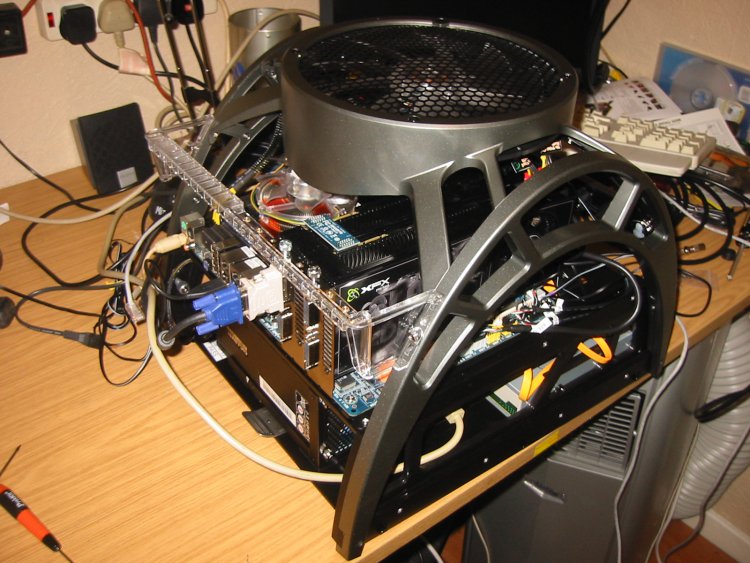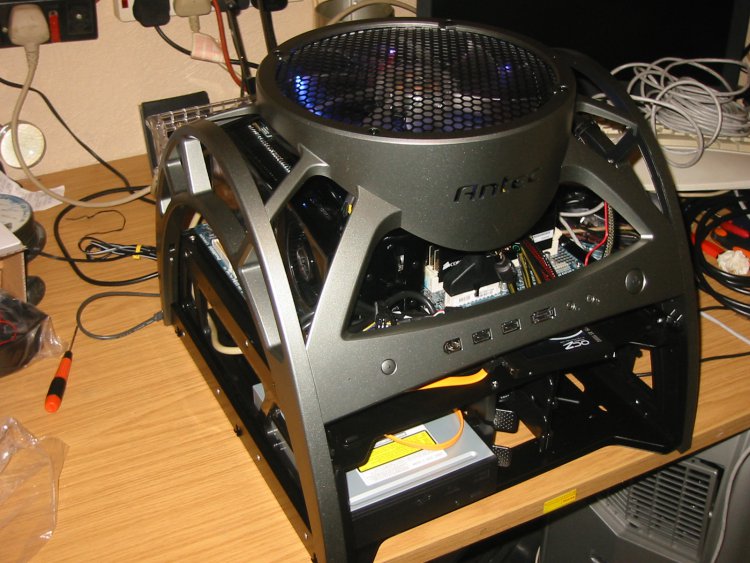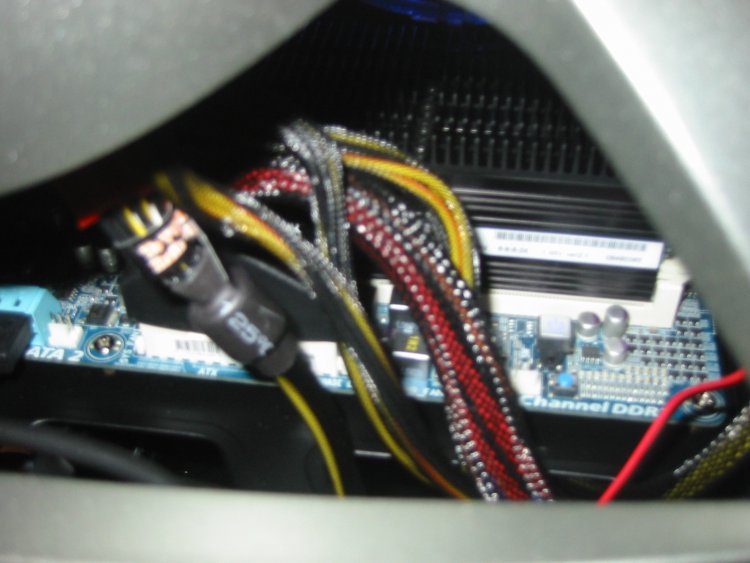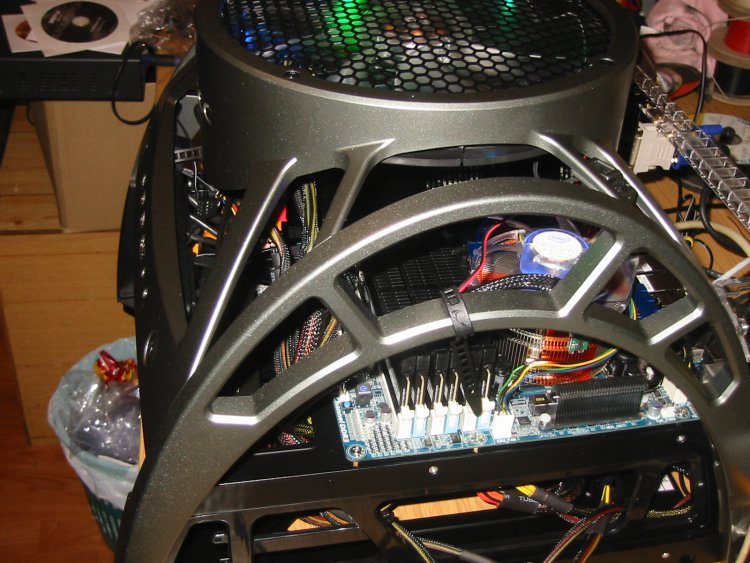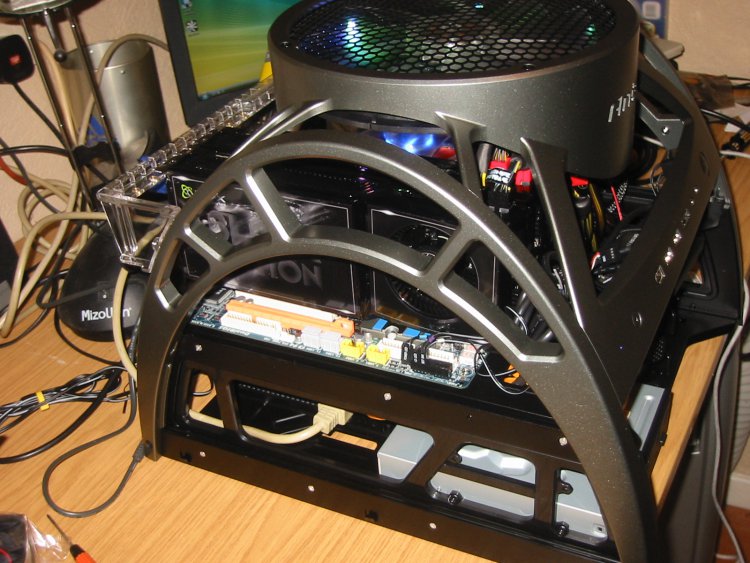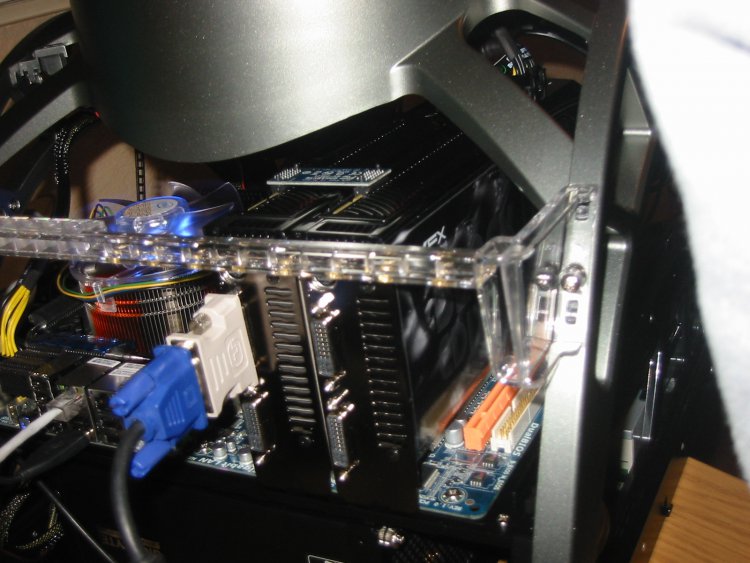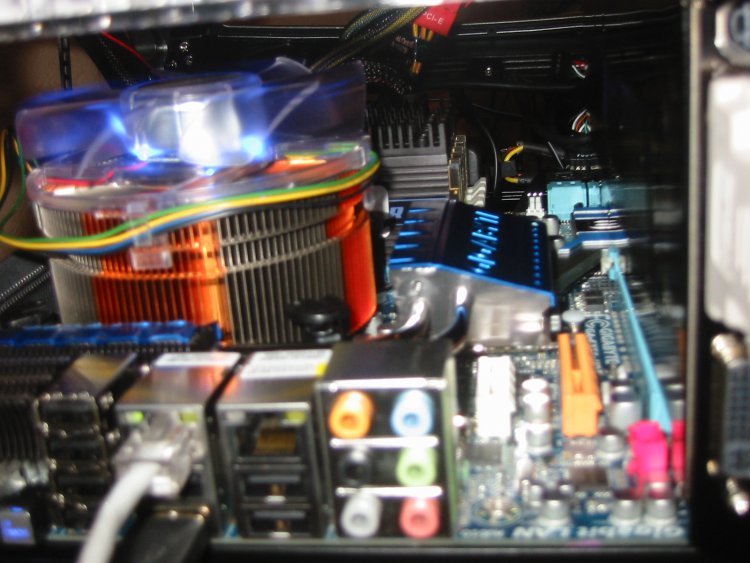A good article - gong to post it in Gen Disc forum as well...
Nehalem by the numbers: The Ars review
By Joel Hruska | Published: November 13, 2008 - 01:05AM CT
Introduction
Nehalem hit the ground running last week, as benchmarks (both our own and others') showed that Intel's new Core i7 chews through most workloads in record time for a one-socket part, often besting dual-socket/octal-core Xeon configurations. The new performance gap between Nehalem and pretty much everything else of comparable cost is the result of upgrades to both the CPUs core architecture and the platform on which the multicore chip now runs.
Because the Core i7 isn't just a "Penryn" Core 2 Duo with some L3 and an integrated memory controller, the present review focuses primarily on measuring how well Nehalem's performance scales in multithreaded workloads as compared to Penryn. If Intel hit its mark, we should see Nehalem beating Penryn, even in single-thread bandwidth/latency insensitive tests. Exploring the current performance delta between 32-bit and 64-bit apps is a strong secondary consideration and is treated here as a separate variable rather than being lumped in together with CPU scaling.
We'll take a quick pass over the basic features of the Core i7, before diving into the benchmark results.
Smaller, faster, cheaper Bigger, faster, more efficient
By now, many of Core i7's key numbers are familiar to many readers. Nehalem features three channels of DDR3-1066 memory, an integrated memory controller clocked at either 3.2GHz or 2.13GHz, an 8MB unified L3 cache, a hefty 25.6GB/s of bandwidth into the CPU socket (courtesy of Intel's new QuickPath interconnect) and a fair number of additional core enhancements Intel made while designing the "tock" of this particular product cycle.

Nehalem uses an LGA775-style interface, but the total number of contact points in the socket (and on the chip) has grown by approximately 75 percent. Only the higher-end Core i7 processors will use this interface, dubbed LGA1366, the consumer/mainstream products that are expected around second half of 2009 will use LGA1156, eschew QPI, and rely on dual-channel DDR3 rather than the current triple-channel configuration. The LGA1366 version of the core is something of a beast; total die size (including memory controller) is 263mm2, and the chip contains a total of 731M transistors.
Read the rest at Nehalem by the numbers: The Ars review: Page 1
Nehalem by the numbers: The Ars review
By Joel Hruska | Published: November 13, 2008 - 01:05AM CT
Introduction
Nehalem hit the ground running last week, as benchmarks (both our own and others') showed that Intel's new Core i7 chews through most workloads in record time for a one-socket part, often besting dual-socket/octal-core Xeon configurations. The new performance gap between Nehalem and pretty much everything else of comparable cost is the result of upgrades to both the CPUs core architecture and the platform on which the multicore chip now runs.
Because the Core i7 isn't just a "Penryn" Core 2 Duo with some L3 and an integrated memory controller, the present review focuses primarily on measuring how well Nehalem's performance scales in multithreaded workloads as compared to Penryn. If Intel hit its mark, we should see Nehalem beating Penryn, even in single-thread bandwidth/latency insensitive tests. Exploring the current performance delta between 32-bit and 64-bit apps is a strong secondary consideration and is treated here as a separate variable rather than being lumped in together with CPU scaling.
We'll take a quick pass over the basic features of the Core i7, before diving into the benchmark results.
Smaller, faster, cheaper Bigger, faster, more efficient
By now, many of Core i7's key numbers are familiar to many readers. Nehalem features three channels of DDR3-1066 memory, an integrated memory controller clocked at either 3.2GHz or 2.13GHz, an 8MB unified L3 cache, a hefty 25.6GB/s of bandwidth into the CPU socket (courtesy of Intel's new QuickPath interconnect) and a fair number of additional core enhancements Intel made while designing the "tock" of this particular product cycle.

Nehalem uses an LGA775-style interface, but the total number of contact points in the socket (and on the chip) has grown by approximately 75 percent. Only the higher-end Core i7 processors will use this interface, dubbed LGA1366, the consumer/mainstream products that are expected around second half of 2009 will use LGA1156, eschew QPI, and rely on dual-channel DDR3 rather than the current triple-channel configuration. The LGA1366 version of the core is something of a beast; total die size (including memory controller) is 263mm2, and the chip contains a total of 731M transistors.
Read the rest at Nehalem by the numbers: The Ars review: Page 1
My Computers
System One System Two
-
- Operating System
- Windows 10 Pro X64 Insider Preview (Skip Ahead) latest build
- Manufacturer/Model
- The Beast Model V (homebrew)
- CPU
- Intel Core i7 965 EE @ 3.6 GHz
- Motherboard
- eVGA X58 Classified 3 (141-GT-E770-A1)
- Memory
- 3 * Mushkin 998981 Redline Enhanced triple channel DDR3 4 GB CL7 DDR3 1600 MHz (PC3-12800)
- Graphics card(s)
- eVGA GeForce GTX 970 SSC ACX 2.0 (04G-P4-3979-KB)
- Sound Card
- Realtek HD Audio (onboard)
- Monitor(s) Displays
- 2 * Lenovo LT2323pwA Widescreeen
- Screen Resolution
- 2 * 1920 x 1080
- Hard Drives
- SanDisk Ultra SDSSDHII-960G-G25 960 GB SATA III SSD (System) Crucial MX100 CT256MX100SSD1 256GB SATA III SSD (User Tree) 2 * Seagate Barracuda 7200.12 ST31000528AS 1TB 7200 RPM SATA II Mech. HD Seagate ST1500DL001-9VT15L Barracuda 7200.12 1.5 TB S
- PSU
- Thermaltake Black Widow TX TR2 850W 80+ Bronze Semi-Mod ATX
- Case
- ThermalTake Level 10 GT (Black)
- Cooling
- Corsair H100 (CPU, dual 140 mm fans on radiator) + Air (2 *
- Mouse
- Logitech MX Master (shared)
- Keyboard
- Logitech G15 (gen 2)
- Internet Speed
- AT&T Lightspeed Gigabit duplex
-
- Operating System
- Sabayon Linux (current, weekly updates, 5.1.x kernel)
- Manufacturer/Model
- Lenovo ThinkPad E545
- CPU
- AMD A6-5350M APU
- Motherboard
- Lenovo
- Memory
- 8 GB
- Sound Card
- Conextant 20671 SmartAudio HD
- Monitor(s) Displays
- Lenovo 15" Matte
- Screen Resolution
- 1680 * 1050
- Hard Drives
- INTEL Cherryvill 520 Series SSDSC2CW180A 180 GB SSD
- PSU
- Lenovo
- Case
- Lenovo
- Cooling
- Lenovo
- Mouse
- Logitech MX Master (shared) | Synaptics TouchPad
- Keyboard
- Lenovo
- Internet Speed
- AT&T LightSpeed Gigabit Duplex

 .
.
 SK
SK
 that is strange...???
that is strange...??? 

 D enjoy john
D enjoy john